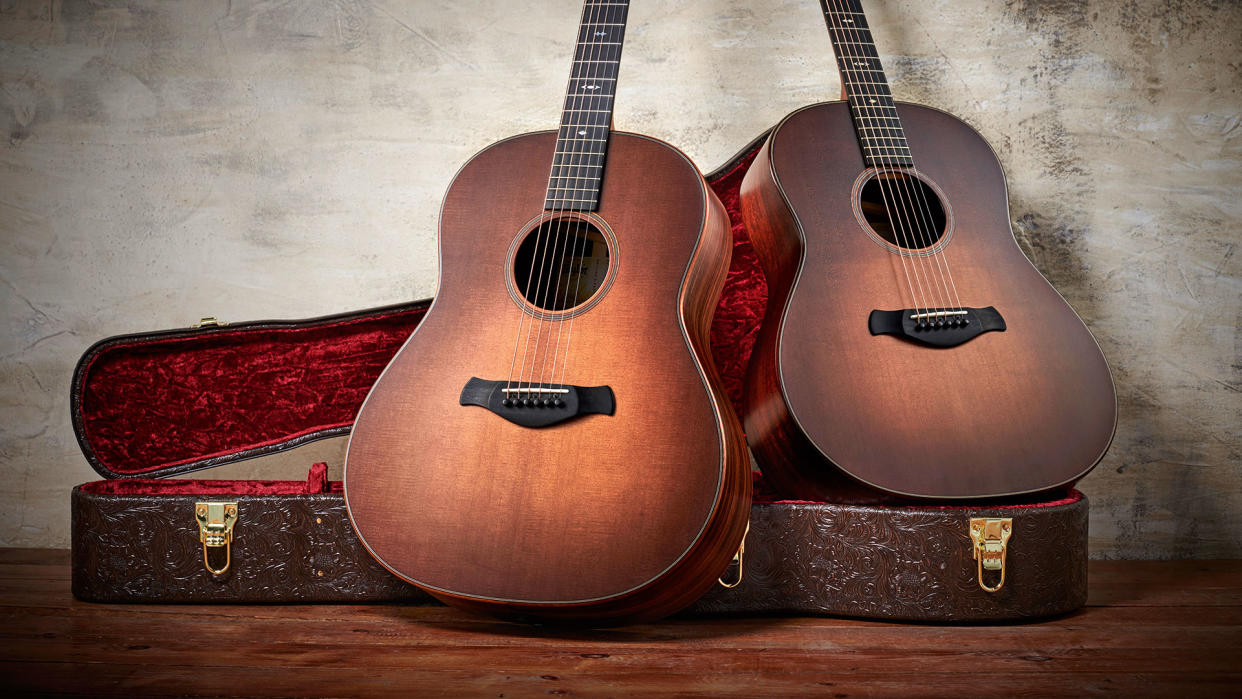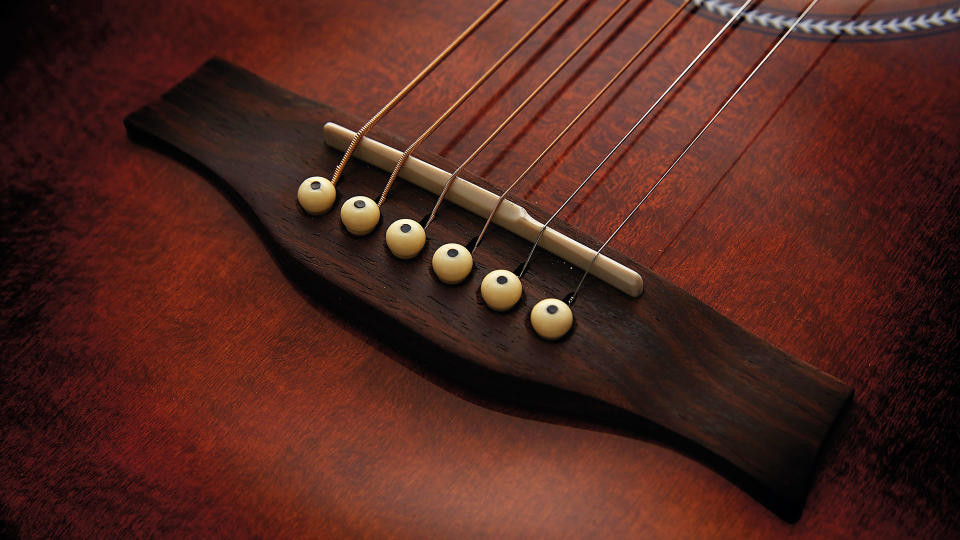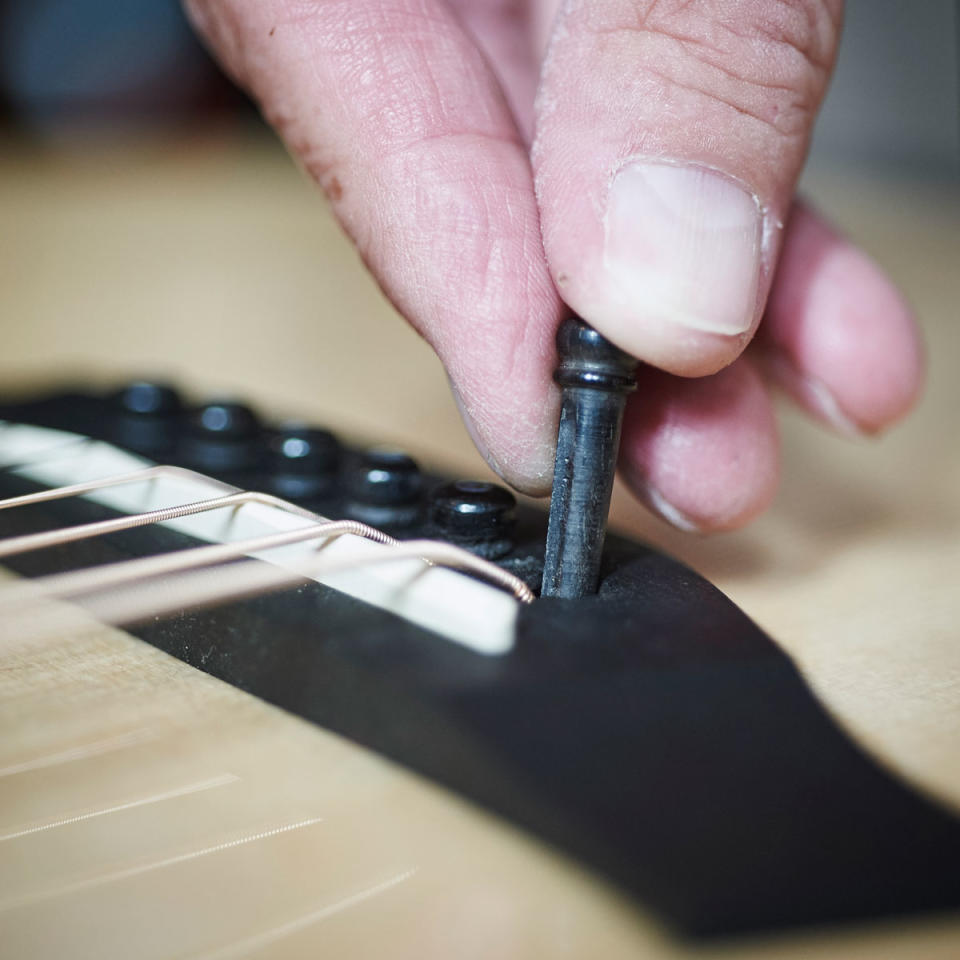Get your acoustic guitar sounding its best by solving these common saddle and bridge pin problems

Tinkering has always been rife among electric guitar players. In contrast, most acoustic guitar players seem less inclined to alter their instruments.
For some reason, we’d often rather accept them for what they are or simply upgrade just as soon as we can afford a better one. This got me thinking about easy and cost-effective acoustic guitar upgrades, so let’s start by focusing on bridge and saddle issues.
The saddle’s function is to transfer energy from vibrating strings into the soundboard, which in turn generates sound waves. For the system to operate properly, the transfer of energy has to be as efficient as possible and none of the string energy can be wasted.
The first thing to check is that the saddle is a good fit for the bridge slot. With the strings at full tension, take a close look at the saddle – or saddles if there’s a separate one for the top E and B strings – and try to determine if there’s a forwards or backwards lean.
In extreme cases, it can be quite obvious, but more subtle angles can be detected if there’s a visible gap between the saddle and the edge of the saddle slot on one side.

This is important because there needs to be full contact between the flat surfaces on the underside of the saddle and the bottom of the saddle slot. If the saddle is leaning, the bridge and saddle will only be making minimal contact along one edge and that compromises energy transfer.
With the strings off, try wiggling the saddle back and forth and lifting it out of the slot. The saddle should fit snugly into the slot and require a bit of effort to pull free. If you feel any looseness or it’s quite easy to pull out of the slot, your guitar will almost certainly benefit from a new saddle.
So long as you have some sandpaper, a flat surface and some files, you can carve your own saddle. Allparts UK offers a range of saddles that require minimal work to install, but it shouldn’t cost too much if you’d prefer to get a professional to do it. It might be an opportunity to upgrade to bone for better tone, or maybe a compensated saddle for improved intonation.
Pin balls
There is more to stringing up an acoustic guitar than you might realize. The key is to ensure that the ball-end of the string is contacting the bridge plate so that it is properly anchored.
When passing the ball-end through the bridge and inserting a pin, it’s important to pull the string back out until you can feel it making contact with the bridge plate before you press the pin firmly into the bridge.
Most acoustics are fitted with slotted bridge pins that are sort of squared off at the bottom, and the ball-ends can snag on the pins and pull them away from the plate.
If you’ve ever found that it takes a new set of strings ages to settle down and stay in tune, it could be that the pins have wedged the strings against the sides of the pin holes and tuning will only stabilise once the ball-ends finally pull through sufficiently to reach the plate.
Some guitar builders carve a curve into their pins on the slotted side so they terminate in a finer point. This helps to prevent the ball-end from snagging on the pin and allows it to slide along the pin towards the plate a little easier. It’s something that’s easy to do yourself using a file and some sandpaper.

In the groove
For those of us who are predominantly electric guitar players, acoustic guitars always feel that much harder to play. This is because action tends to be higher and acoustic strings are usually heavier. Leaving the truss rod and nut aside for now (because that’s a whole different article), the solution to high action is to lower saddle height.
That’s easy to accomplish on conventional electric guitars, but for acoustics it usually means shaving material from the top or bottom of the saddle. Consequently, it’s very common to see acoustics with lowered action that have very little string break angle over the saddle.
An inadequate break angle will reduce the efficiency of energy transfer from strings to soundboard. In extreme cases, the string may not ring cleanly and may even slide across the top of the saddle when you bend strings. Fortunately, there is a way to enjoy lower action without compromising your tone.
With bolt-on neck electric guitars, one workaround is to alter the neck angle using shims, but the complicating factor with acoustics is that the neck angle is effectively fixed. There is a solution that’s pretty old-school, but is enjoying a bit of a comeback. In a nutshell it’s using unslotted bridge pins.

